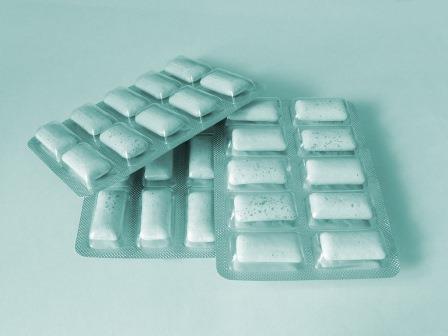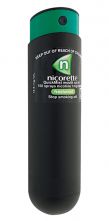We generally recommend that participants in this program use Nicotine Replacement Therapy (NRT) to assist in the quitting process. We are therefore providing a brief explanation below of NRT and its use.
Nicotine replacement therapy (NRT) is a common over-the-counter medication used to help smokers to quit. Cigarettes contain many toxic products that are deadly to your health but their addictive properties are mainly due to their nicotine content. This is why it is important to consider using NRT when you are quitting as NRT relieves cravings and symptoms of withdrawal allowing you time to break the habit of smoking.
There are 2 main types of NRT:
- Long acting: nicotine patch
- Short acting: oral spray, nicotine strips, lozenges, gum and inhaler
These medications can be purchased at pharmacies and supermarkets without a prescription. Patches may also be subsidised through the Pharmaceutical Benefit Scheme (PBS) when they have been prescribed by a GP on an 'authority script'
Things you should know
Nicotine replacement therapy (NRT) is safe and standard doses will provide approximately half the amount you receive when you smoke.
Some people worry that they will become addicted to the NRT but the majority of smokers have no problems stopping NRT once they have completed the recommended course.
It is also important to increase your dose of NRT if you are experiencing cravings or withdrawals and short acting NRT is perfect for those moments. Please note:
The recommendations described immediately below are based on solid research findings, and may differ slightly from recommendations from the drug manufacturers.
How much NRT should I use?
If you smoke less than 10 cigarettes each day, use the oral NRT (lozenges, gum, strips, spray & inhaler) when
- You experience cravings or symptoms of withdrawal, or
- In anticipation of a high risk situation for smoking
- Use the highest dose products e.g. 4mg lozenge, if possible, as this will offer the best results
If you smoke 10 or more cigarettes each day, we recommend that you start using a 21mg (24-hour) or 15mg (16-hour) nicotine patch beginning about 2 weeks before attempting to quit. Using a patch while still smoking is safe
- Once you attempt to quit, continue with the patch but also
- Add oral NRT when you experience cravings or symptoms of withdrawal or
- In anticipation of a high risk situation for smoking.
Use the highest dose products e.g. 4mg lozenge, if possible, as this will give the best results
If after a few days you are still smoking or experiencing troublesome cravings, we recommend that you continue with the oral NRT but increase the patches to 2 x 21mg patches during the day. If wearing two causes too much sleep disturbance remove one patch before retiring.
If after a few days you continue to smoke or experience troublesome cravings then make sure you are using oral NRT liberally for any cravings or anticipated high risk situations. You may even consider adding a third patch.
Remember, it takes time to break your smoking habit so continue on with NRT using the highest-dose patch/es for the full treatment (8-12 weeks).
What types of NRT are available?
Nicotine Patches

Nicotine patches are applied to the skin daily and deliver a steady dose of nicotine throughout the day. It takes several hours for the patch to have its full effect so they are not suitable for managing immediate cravings. You will need to combine patches with shorter acting products if you have regular cravings.
Patches should be applied to clean, dry, hairless skin, usually on the upper arm, back or chest.
We recommend using the 21mg patch for 24hours, replacing it each morning. This helps to reduce early morning cravings. If you find that this is not sufficient, 2 patches may be used. If you find you are having sleep disturbances you can remove the patch at night but remember that you may experience stronger cravings on waking and should prepare for that with oral NRT e.g. gum, spray. Changing the site of application daily helps to avoid skin irritation however if you do react to the patches, please speak with your GP or pharmacist.
Patches should be applied to clean, dry, skin on any non-hairy part of the body, if using the upper body causes problems, such as excessive sweating causes the patches to slip off, or if more sites are needed for rotation.
Nicotine Gum

Nicotine gum delivers nicotine to the body by being absorbed though the lining of the cheeks. It is available in 2 strengths (2mg and 4mg) but we recommend that you use the stronger dose. The full effect will not be felt until 30 minutes have passed so it is best to use the gum regularly e.g. hourly or in preparation for a 'trigger' event. You can safely chew up to 10 pieces of gum per day.
Nicotine gum is not used like regular gum. It is important to use the 'chew and park' method for best results. Place one piece of gum in your mouth and chew slowly until you feel a tingling or peppery taste. This usually happens after approximately 10 chews. Stop chewing and park the gum between your cheek and gums. The tingling will gradually disappear over the next minute. Once the tingling or peppery test has gone, begin chewing again until the tingling returns. Repeat this process for 30 minutes or until the peppery taste fades and then dispose of the gum.
Absorption of the nicotine can be reduced if you eat or drink whilst the gum is in your mouth or if you have had food or drink 10 minutes prior to using the gum.
Nicotine Lozenges

Nicotine lozenges release nicotine into the mouth as they dissolve and are available in 2 strengths (2mg and 4mg). There is also a mini-lozenge available in doses of 1.5mg and 4mg however we recommend that you use the stronger dose.
Allow the lozenge to dissolve in your mouth for 10-15 minutes for the mini-lozenge and 20-30 minutes for the regular lozenge. Try to move it from side to side regularly and avoid swallowing excessive amounts of saliva. Never chew or swallow the lozenge.
Like the gum, the full effect will not be felt until 30 minutes have passed so it is best to use lozenges regularly e.g. hourly or in preparation for a 'trigger' event. You can safely take up to 15 lozenges per day.
Absorption of the nicotine can be reduced if you eat or drink whilst the lozenge is in your mouth or if you have had food or drink 10 minutes prior to using lozenge.
Nicotine Spray

Nicotine spray is also absorbed through the mouth in a spray that is delivered under the tongue or on the side of the cheek. Its initial effect is felt within 60 seconds, with its full effect occurring after only 10 minutes. It can be used up to 4 times each hour (1-2 sprays every 30-60 minutes), up to a maximum of 64 sprays per day and so it is a useful method to relieve strong cravings.
Avoid swallowing immediately after spraying (1-2seconds) and avoid food and drink 10 minutes before and 5 minutes after spraying as this can reduce the absorption of the nicotine. Care should be taken to avoid spraying near the lips and eyes.
Nicotine Inhaler
The nicotine inhaler is useful for people who like the feeling of holding a cigarette. It is a hollow plastic tube which contains a replaceable cartidge that delivers menthol flavoured nicotine. Puffing on the inhaler delivers nicotine into the mouth where it is absorbed though the lining.
It is important to take shallow puffs rather than deep breaths which can be done every 2 seconds. Each cartridge contains about 40 minutes worth of puffing or 400 puffs and so you can expect to use between 3-6 cartridges each day. You will know when to change the cartridge as the menthol flavour will fade.

Remember to rinse the mouth piece with water several times per week.
As with all of the oral products, the effectiveness will be reduced if food or drink is taken within 10-15 minutes of use.
Are there any side effects?
Nicotine products can cause symptoms of insomnia, dizziness, headache, cough, sore throat, nausea, hiccups, heartburn, flatulence and irritation of the mouth. If you experience any of these symptoms it is important that you discuss this with your GP, pharmacist or counsellor. It is better to work out the best method of NRT for you than to go back to smoking.
Remember
It is important to STOP and think about how best to use NRT:
Sufficient use of NRT will help stop the cravings-use the right dose for you.
Try different NRT products until you find the ones that work best for you.
Often – control cravings by using short acting products regularly.
Prepare for cravings by carrying NRT products with you at all times.
Nicotine gum photograph courtesy of FreePhotosBank.

